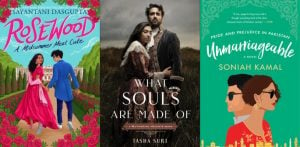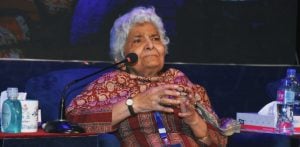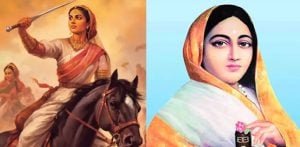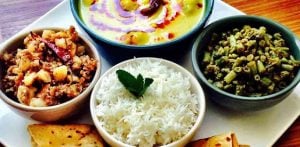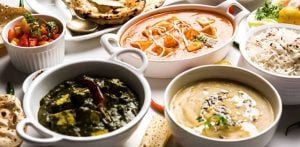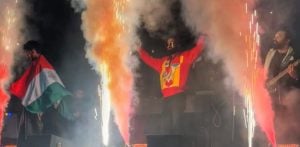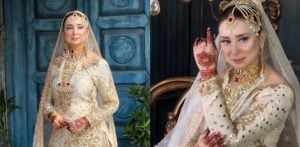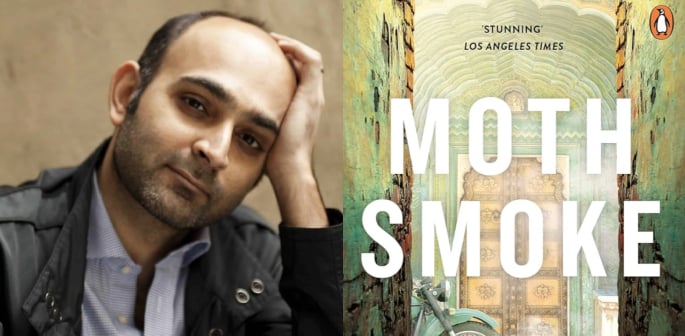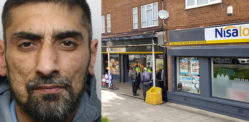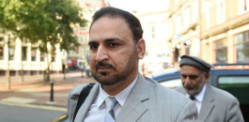A vast majority of the urban areas remain poor.
Mohsin Hamid published the book Moth Smoke in 2000, before captivating readers with his prize-winning novel, The Reluctant Fundamentalist, for which he is best known.
Set against the sweltering summer of Lahore in 1998, Moth Smoke unfolds the story of a banker whose career takes a nosedive, revealing his deep-seated insecurities.
The narrative vividly portrays various issues in Pakistan, including drug abuse, employment challenges, and societal views on marriage, offering a window into the lives of Lahore’s elite.
In contrast, it also explores the struggles faced by their servants, creating a powerful juxtaposition.
With its rich thematic content, Moth Smoke serves as a profound background source, shedding light on the complexities of Pakistani society.
Here are a few key themes to ponder before delving into the book:
History of Lahore
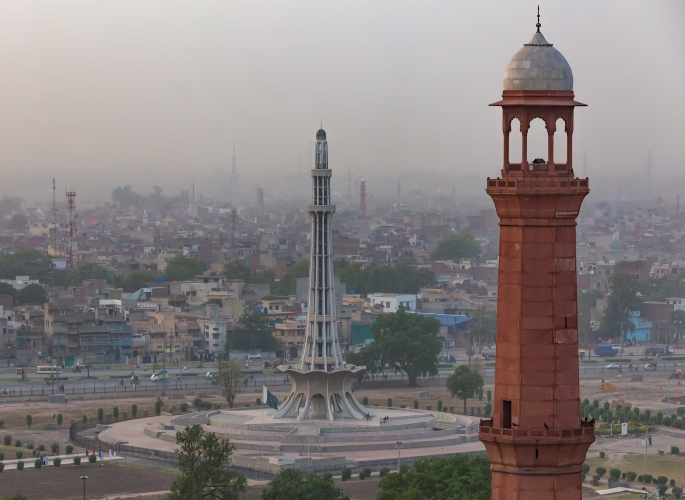 Due to urbanisation in the Global South, millions of peasants have migrated to cities, profoundly affecting the countryside.
Due to urbanisation in the Global South, millions of peasants have migrated to cities, profoundly affecting the countryside.
The European Environment Agency defines urbanisation as “the increase in the proportion of people living in towns and cities.”
This transformation has turned landscapes into arenas of political conflict between the state and society.
Cities like Cairo, Istanbul, and Sao Paulo have witnessed mass protests, highlighting the fragility of government control and the brutality of urban experiences.
In the last three decades, Pakistan has experienced significant urbanisation.
The urban landscape of contemporary Pakistan has been shaped by rural-to-urban migration and the rising assertiveness of the middle class.
In Lahore, the capital, urbanisation has sparked class anxieties.
Despite the city’s dense population, a vast majority of urban areas remain impoverished.
This disparity has led some to argue that urban lifestyles and mindsets contribute to a disconnect from traditional values and meanings.
In the 1860s, efforts focused on preventing disease spread from the indigenous population to European residents and British Indian soldiers in the Mian Mir Cantonment.
The resulting policies created a power struggle in Lahore, with locals perceived as needing colonial intervention for discipline.
Today, contemporary elites and civil servants still view the urban poor as a threat to order.
This perspective has perpetuated conflicts between the colonial ruling class and indigenous populations.
Colonial efforts to segregate the British from the “dangerous classes” marked Lahore’s history.
Yet, unlike some European and colonial cities in the 19th and early 20th centuries, Lahore did not experience radical uprisings until the partition of India in 1947.
Ethnic Conflict
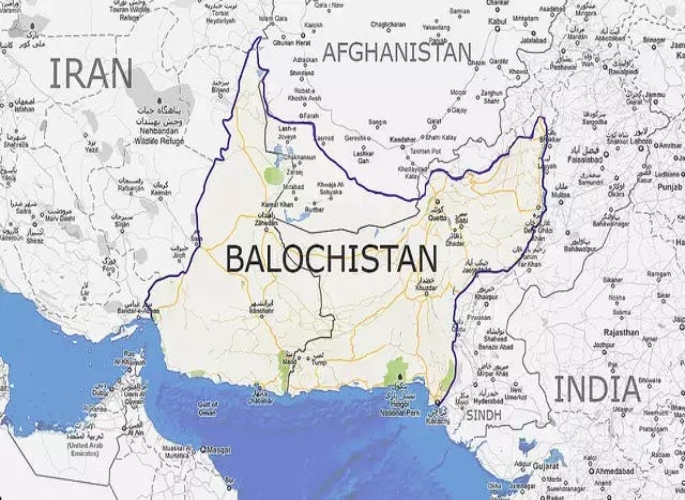 Ethnic conflicts have been a defining feature of Pakistan’s history within the nation-state system.
Ethnic conflicts have been a defining feature of Pakistan’s history within the nation-state system.
The country has experienced several ethnicity-based conflicts, notably one that led to its dismemberment in 1971.
According to The Express Tribune, approximately 80% of states are multi-ethnic, indicating the absence of a single ethnic group’s dominance in society.
These conflicts have stemmed from warfare, insecurity, and significant loss of lives.
A report highlights that between 1945 and 2003, there were 121 ethnic conflicts.
Since 1955, ethnic conflicts have resulted in the deaths of between 13 million and 20 million civilians, in addition to creating 14 million internationally recognized refugees and about 17 million internally displaced persons.
Ethnic conflict often arises when groups compete for power, resources, and territory.
The conflict in Balochistan serves as a prime example.
The International Affairs Review states: “The Baloch people, a unique ethno-linguistic group spread across Afghanistan, Iran, and Pakistan, face issues like the Baloch-Pashtun divide, marginalisation by Punjabi interests, and economic oppression.
“The ongoing conflict concerns the Gwadar mega-port, oil revenues, the war in Afghanistan, and repression by the Pakistani government, leading to significant social and political inequalities.”
Violent ethnic conflicts, such as those in Balochistan and Khyber-Pakhtunkhwa, underscore these inequalities.
Khyber Pakhtunkhwa, located in the north-western region of Pakistan, experienced a military intervention following Taliban militants’ attacks, revealing political system weaknesses.
Secure Livelihoods details: “The military operation aimed to regain control of Swat from the Taliban and eliminate their presence in Buner, Shangla, and Lower Dir.
“Civilians were evacuated to avoid collateral damage, resulting in approximately 3 million internally displaced persons seeking refuge in areas like Mardan and Peshawar.
“After the military’s withdrawal, the region transitioned from a humanitarian crisis to a post-conflict situation, highlighting the social challenges of rehabilitation.”
Exclusionary national ideologies and competition for limited natural resources are significant causes of ethnic conflict, as seen in former East Pakistan (now Bangladesh) and contemporary Balochistan.
The opposition in 1971 was partly due to Punjabi interests in creating four ethnically diverse provinces in West Pakistan, including Balochistan.
The International Affairs Review notes actions were taken to “counter an ethnically homogenous and numerically superior East Pakistan,” where “Bengalis, like the Balochs, felt underrepresented in politics and the military establishment despite their significant population.”
Employment in Lahore
 The capital of the country offers a wide array of employment paths and options. Below are some common job sectors:
The capital of the country offers a wide array of employment paths and options. Below are some common job sectors:
Information Technology (IT)
This is the most common and lucrative choice.
The thriving IT sector caters to a significant number of businesses in software development, web design, and digital marketing.
IT professionals enjoy competitive salaries and the opportunity to work with cutting-edge technologies.
Entrepreneurship
Lahore provides numerous support systems for individuals looking to launch their businesses, offering a fertile ground for startups and new ventures.
Medical Careers and Healthcare
With numerous prestigious universities and academic institutions, this sector offers desirable careers in teaching, research, and administration.
Banking and Finance
As one of Pakistan’s economic hubs, Lahore boasts a large number of banks, financial institutions, and investment firms, providing opportunities for client interaction and financial stability.
Textile Manufacturing
The thriving textile manufacturing industry in Lahore makes a significant contribution to the economy, offering roles in design, production, marketing, and management.
Journalism and Media
The media sector in Lahore offers jobs in print, television, and digital media, with opportunities for reporters, journalists, editors, and content producers.
Tourism and Hospitality
Lahore’s historic sites and rich cultural heritage attract many tourists, creating jobs in hotels, restaurants, tour operators, and event management businesses.
Sales and Customer Service
There is a demand for skilled salespeople in retail, real estate, car sales, and more.
Despite these opportunities, unemployment in Pakistan has increased, reaching 6.3% in 2023, according to an article on LinkedIn.
This translates to millions of people without work, attributed to several factors:
Lack of Skills and Education
Poor quality or the high cost of education limits access to necessary skills.
Technological Shifts
New jobs requiring specific technological skill sets have emerged, often leaving those with outdated skills without employment opportunities.
Nepotism
Employers sometimes give preference to friends and family for jobs, limiting opportunities for others.
Urban Concentration of Jobs
Many jobs are concentrated in urban areas, making it difficult for people in rural areas to find employment.
Discrimination
Women, in particular, face discrimination in the workplace, further limiting employment opportunities.
Marriage
 In Pakistan, expectations around marriage have shifted from arranged marriages to “love” marriages. At one point, the latter was considered scandalous.
In Pakistan, expectations around marriage have shifted from arranged marriages to “love” marriages. At one point, the latter was considered scandalous.
Ties between honour and finding a partner are strong, with class and education often playing roles in securing a suitable match.
When couples meet for the first time, traditionally in the setting of a “date,” they are sometimes chaperoned, though this practice is increasingly changing.
In certain instances, a man may be polygamous and take up to four wives, provided it is consensual and adheres to Islamic law.
It is estimated that parents arrange at least 50% of marriages in Pakistan.
Matchmakers may facilitate the exchange of contact information between families.
Traditionally, it was common for the bride to meet her husband on their wedding day.
In some rural areas, individuals might marry their cousins.
Discussions between parents about the dowry are also common.
Britannica defines “dowry” as the money, goods, or estate a woman brings to her husband or his family in marriage.
In modern times, couples can meet through various means, including matrimonial apps and websites, family recommendations, speed dating events, educational institutions, and workplaces.
Pre-wedding rituals include the mangni (engagement), where families exchange rings and symbols to signify the acceptance of the marriage.
The mehndi ceremony involves applying henna to the bride’s hands and feet, as well as to female guests, and is characterised by dancing, singing, and music, often with dhol played, symbolising good luck, beauty, and love.
The Sangeet is a musical gathering where the bride’s family and friends sing traditional wedding songs.
The wedding includes the nikah, a contract ceremony conducted by an Islamic leader or Qazi, where the bride and groom, along with witnesses, recite religious verses, exchange vows, and sign the marriage contract.
The Baraat is the groom’s procession to the wedding venue, traditionally on a horse or in a fancy car, accompanied by music and dancing.
The Rukhsati is a symbolic moment when the bride bids farewell to her family to start a new life with her husband.
The bride’s family blesses her and throws petals as she steps into the car or palanquin to take her to the groom’s home.
Finally, the Walima is a reception hosted by the groom’s family, occurring a day or a few days after the wedding, featuring a large, indulgent feast.
Drugs
 Pakistan’s neighbour, Afghanistan, is the world’s largest producer of illicit opium.
Pakistan’s neighbour, Afghanistan, is the world’s largest producer of illicit opium.
This places the country in a vulnerable position regarding drug abuse and trafficking.
Patterns of illicit drug production, distribution, and abuse have increased, with more accounts of drug-related crimes and offences reported.
There was a decline in the cultivation of opium poppy in the 1990s.
However, there was a re-emergence of poppy cultivation in recent years, particularly in 2003.
Cannabis is still produced but is considered a low priority by drug control authorities.
It is widely grown, readily available, and can be purchased at reasonably low prices.
Pakistan is one of the main transit countries for drugs from Afghanistan, with many new routes and methods for drug trafficking emerging.
“In 2007, law enforcement agencies seized 13,736 kg of heroin/morphine base, 101,069 kg of cannabis, and 15,362 kg of opium, down from the 2006 seizures of 35,478 kg of heroin/morphine base and 115,443 kg of cannabis, and up from the 2006 opium seizures of 8,907 kg.”
There is concern about the outbreak of HIV/AIDS amongst drug users in Pakistan.
In addition, the use of inhalants among adolescents is increasing.
“The 2006 Assessment Report identified a substantial increase in the use of cannabis, sedatives, and tranquillizers since 2000.
“The report identifies an emerging shift from traditional plant-based drugs to synthetic drugs, commonly termed ‘Amphetamine Type Stimulants (ATS)’.”
According to the Drug Use in Pakistan 2013 Technical Summary Report, an estimated 6.45 million (5.8%) people aged 15–64 years in Pakistan used synthetic drugs or prescription drugs for non-medical purposes in the past 12 months.
Drug addiction is emerging as a significant issue, affecting mental health, incurring large health costs, having negative social impacts, and increasing death rates.
Moth Smoke is a wonderful and insightful book.
It is thought-provoking, covering many ideas to reflect upon.
One can contemplate the portrayal of Pakistan and cross-reference it with their own experiences and ideas.
Published in over 30 languages and becoming an international bestseller with over a million copies sold, The Reluctant Fundamentalist was shortlisted for the Man Booker Prize.
Mohsin Hamid’s fourth book, Exit West (2017), narrates the journey of two refugees escaping a war-torn city in a world where billions migrate through magical black doors.
It earned a Man Booker shortlist and was named the best book of the year by Barack Obama.


